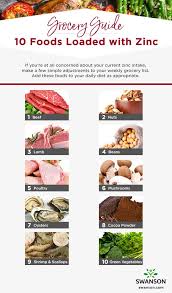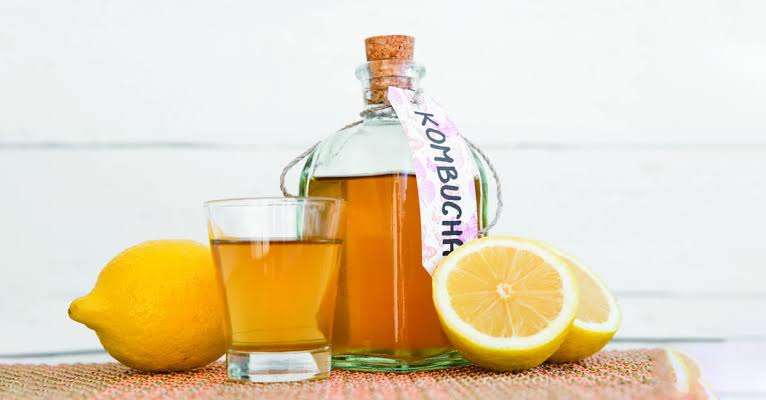Complete List of Foods that are High in Zinc
Zinc is an essential mineral forming a component of more than 300 enzymes in the body with functions including wound healing, immune system function, building proteins and DNA, fertility in adults and growth in children. Zinc is also needed for maintaining the senses of smell and taste.
Whether you prefer to refer to them as foods that are high in zinc, zinc rich foods, zinc in food, zinc food sources or even foods that contain zinc, they all mean one thing and describes those foods that contain high amount of zinc in it.
A deficiency in zinc can lead to stunted growth, diarrhea, impotence, hair loss, eye and skin lesions, impaired appetite, and depressed immunity.
Conversely, consuming too much zinc can lead to nausea, vomiting, loss of appetite, abdominal cramps, diarrhea, and headaches in the short term, and can disrupt the absorption of copper and iron in the long term.
Zinc is a mineral that’s essential for good health. It’s required for the functions of over 300 enzymes and involved in many important processes in your body.
It metabolizes nutrients, maintains your immune system and grows and repairs body tissues.
Your body doesn’t store zinc, so you need to eat enough every day to ensure you’re meeting your daily requirements.
It’s recommended that men eat 11 mg of zinc per day, while women need 8 mg. However, if you’re pregnant, you’ll need 11 mg per day, and if you’re breastfeeding, you’ll need 12 mg.
Some people are at risk of a zinc deficiency, including young children, teenagers, the elderly and women who are pregnant or breastfeeding.
However, eating a healthy balanced diet that includes zinc-rich foods should satisfy everyone’s needs.
Here are the best foods that are high in zinc
Meat is an excellent source of zinc and one of the foods that are high in zinc.
Red meat is a particularly great source, but ample amounts can be found in all different kinds of meat, including beef, lamb and pork.
In fact, a 100-gram (3.5-ounce) serving of raw ground beef contains 4.8 mg of zinc, which is 44% of the Daily Value (DV) (4).
This amount of meat also provides 176 calories, 20 grams of protein and 10 grams of fat. Plus, it’s a great source of many other important nutrients, such as iron, B vitamins and creatine.
It’s worth noting that eating large amounts of red meat, especially processed meat, has been linked to an increased risk of heart disease and some cancers.
However, as long as you keep your intake of processed meats to a minimum and consume unprocessed red meats as part of a diet rich in fruits, vegetables and fiber, this probably isn’t something you need to worry about.
Summary Meat is an excellent source of zinc. A 100-gram serving of raw ground beef provides 44% of the DV.
Shellfish are healthy, low-calorie sources of zinc.
Oysters contain particularly high amounts, with 6 medium oysters providing 32 mg, or 291% of the DV.
Other types of shellfish contain less zinc than oysters but are still good sources.
In fact, Alaskan crab contains 7.6 mg per 100 grams (3.5 ounces), which is is 69% of the DV. Smaller shellfish like shrimp and mussels are also good sources, both containing 14% of the DV per 100 grams (3.5 ounces).
However, if you are pregnant, make sure shellfish are completely cooked before you eat them to minimize the risk of food poisoning.
Summary Shellfish like oysters, crab, mussels and shrimp can all contribute to your daily zinc needs.
Legumes like chickpeas, lentils and beans all contain substantial amounts of zinc.
In fact, 100 grams of cooked lentils contain around 12% of the DV.
However, they also contain phytates. These antinutrients inhibit the absorption of zinc and other minerals, meaning zinc from legumes isn’t as well absorbed as the zinc from animal products.
Despite this, they can be an important source of zinc for people following vegan or vegetarian diets. They are also an excellent source of protein and fiber and can be easily added to soups, stews and salads.
Heating, sprouting, soaking or fermenting plant sources of zinc like legumes can increase this mineral’s bioavailability.
Summary Legumes contain high amounts of zinc. However, they also contain phytates, which reduce its absorption. Processing methods like heating, sprouting, soaking or fermenting can help improve its bioavailability.
Seeds are a healthy addition to your diet and can help increase your zinc intake.
However, some seeds are better choices than others.
For example, 3 tablespoons (30 grams) of hemp seeds contain 31% and 43% of the recommended daily intake for men and women, respectively.
Other seeds containing significant amounts of zinc include squash, pumpkin and sesame seeds.
In addition to boosting your zinc intake, seeds contain fiber, healthy fats, vitamins and minerals, making them an excellent addition to your diet.
Including them as part of a healthy diet has also been linked to some health benefits, including reduced cholesterol and blood pressure.
To add hemp, flax, pumpkin or squash seeds into your diet, you can try adding them to salads, soups, yogurts or other foods.
Summary Some seeds like hemp, pumpkin, squash and sesame seeds contain significant amounts of zinc. They are also a good source of fiber, healthy fats and vitamins, making them a healthy addition to your diet.
Eating nuts such as pine nuts, peanuts, cashews and almonds can boost your intake of zinc.
Nuts also contain other healthy nutrients, including healthy fats and fiber, as well as a number of other vitamins and minerals.
If you’re looking for a nut high in zinc, cashews are a good choice. A 1-ounce (28-gram) serving contains 15% of the DV.
Nuts are also a quick and convenient snack and have been linked to a reduction in risk factors for some diseases, like heart disease, cancer and diabetes.
What’s more, people who eat nuts tend to live longer than those who don’t, making nuts a very healthy addition to your diet.
Summary Nuts are a healthy and convenient snack that can boost your intake of zinc and many other healthy nutrients.
Dairy foods like cheese and milk provide a host of nutrients, including zinc.
Read Also: Complete List of Anti-Inflammatory Foods You Should Know About
Milk and cheese are two notable sources, as they contain high amounts of bioavailable zinc, meaning most of the zinc in these foods can be absorbed by your body.
For example, 100 grams of cheddar cheese contains about 28% of the DV, while a single cup of full-fat milk contains around 9%.
These foods also come with a number of other nutrients considered important for bone health, including protein, calcium and vitamin D.
Summary Dairy foods are good sources of zinc. They also contain protein, calcium and vitamin D, all of which are important nutrients for bone health.
Eggs contain a moderate amount of zinc and can help you meet your daily target.
For example, 1 large egg contains around 5% of the DV.
This comes with 77 calories, 6 grams of protein, 5 grams of healthy fats and a host of other vitamins and minerals, including B vitamins and selenium.
Whole eggs are also an important source of choline, a nutrient that most people aren’t getting enough.
Summary One large egg contains 5% of the DV for zinc, as well as a host of other nutrients, including protein, healthy fats, B vitamins, selenium and choline.
Whole grains like wheat, quinoa, rice and oats contain some zinc.
However, like legumes, grains contain phytates, which bind to zinc and reduce its absorption.
Whole grains contain more phytates than refined versions and will likely provide less zinc.
However, they are considerably better for your health and a good source of many important nutrients like fiber, B vitamins, magnesium, iron, phosphorus, manganese and selenium.
In fact, eating whole grains has been linked to a longer life and number of other health benefits, including a reduced risk of obesity, type two diabetes and heart disease.
Summary Whole grains can provide a source of zinc in your diet. However, the zinc they provide may not be absorbed as well as other sources due to the presence of phytates.
Read Also: The 12 Best Foods and Drinks that are Good for the Liver
In general, fruits and vegetables are poor sources of zinc.
However, some vegetables contain reasonable amounts and can contribute to your daily needs, especially if you don’t eat meat.
Potatoes, both regular and sweet varieties, contain approximately 1 mg per large potato, which is 9% of the DV.
Other vegetables like green beans and kale contain less, at around 3% of the DV per 100 grams.
Although they don’t contain a lot of zinc, eating a diet rich in vegetables has been linked to a reduced risk of chronic diseases like heart disease and cancer.
Summary Most vegetables are poor sources of zinc, but some contain moderate amounts and can contribute to your daily needs, especially if you don’t eat meat.
Perhaps surprisingly, dark chocolate contains reasonable amounts of zinc.
In fact, a 100-gram (3.5-ounce) bar of 70–85% dark chocolate contains 3.3 mg of zinc, or 30% of the DV.
However, 100 grams of dark chocolate also contain 600 calories. So while it provides some healthy nutrients, it is a high-calorie food.
While you may get some added nutrients with your treat, it’s not a food you should be relying on as your main source of zinc.
Summary Dark chocolate can be a source of zinc. However, it’s also high in calories and sugar, so it should be eaten in moderation and not as a primary source of zinc.
Zinc is an essential mineral, and eating enough is important for maintaining good health.
The best way to ensure you are getting enough is to eat a varied diet with good sources of zinc, such as meat, seafood, nuts, seeds, legumes and dairy.
These foods can be easy and delicious additions to your diet.
If you’re worried that you’re not getting enough zinc through your diet, consider speaking to your healthcare provider about the possibility of taking a supplement.



